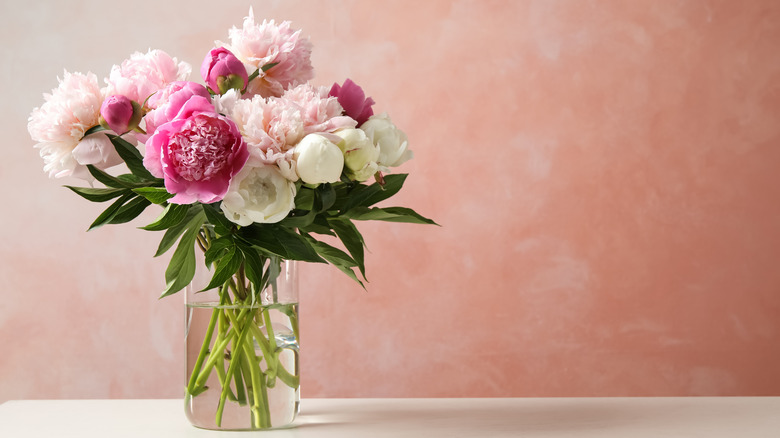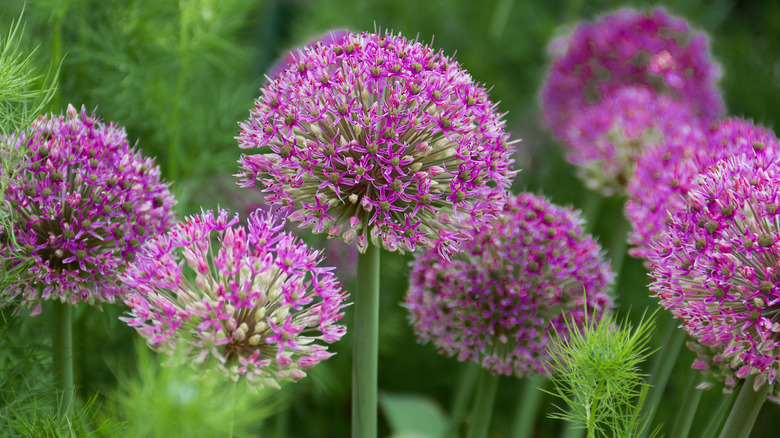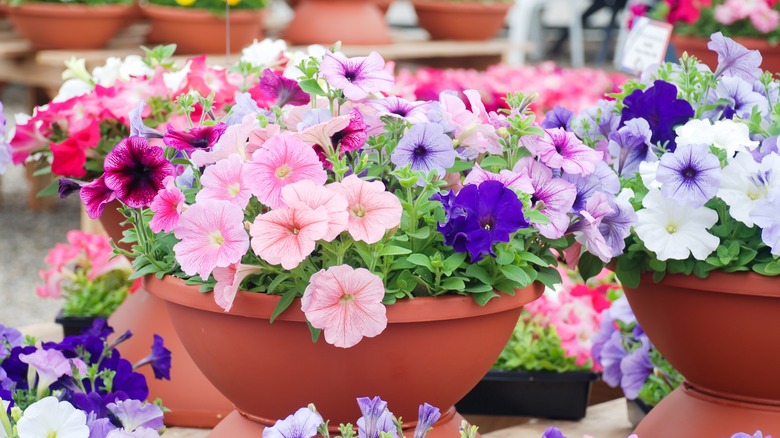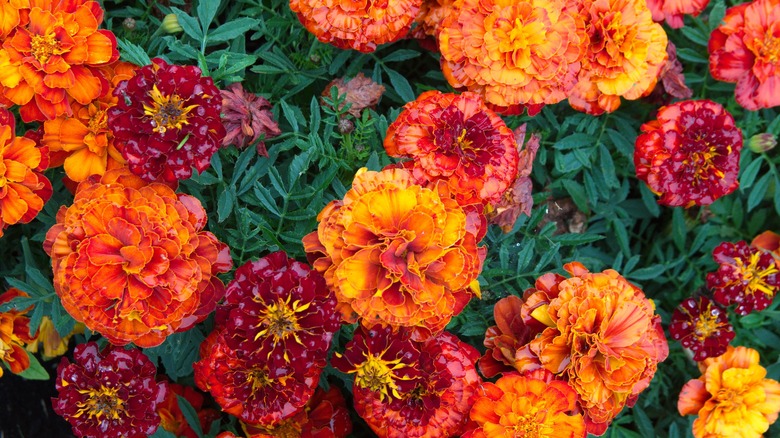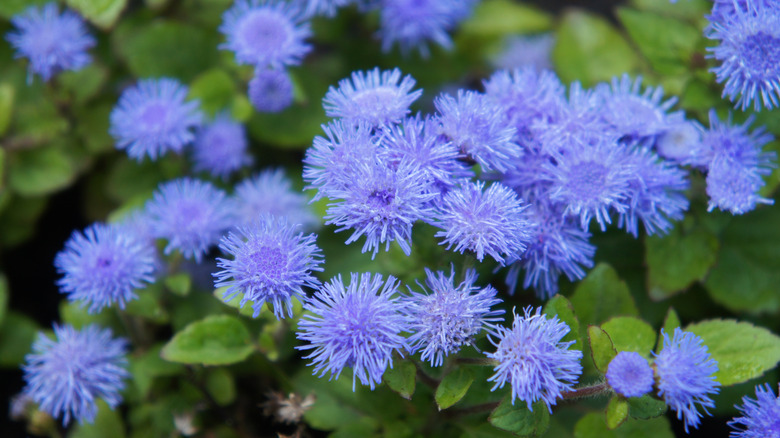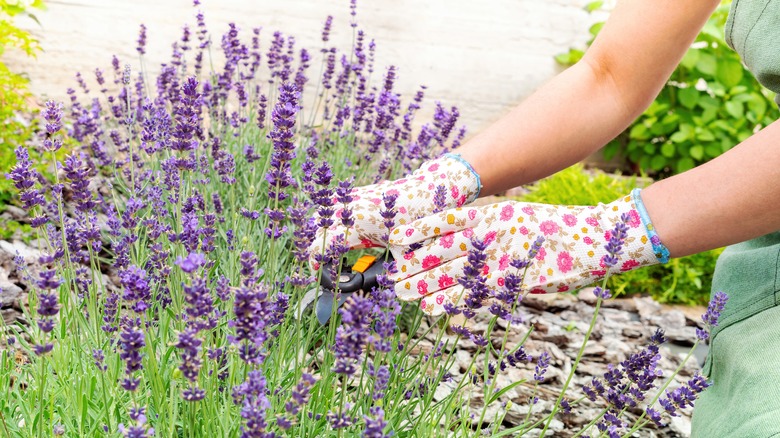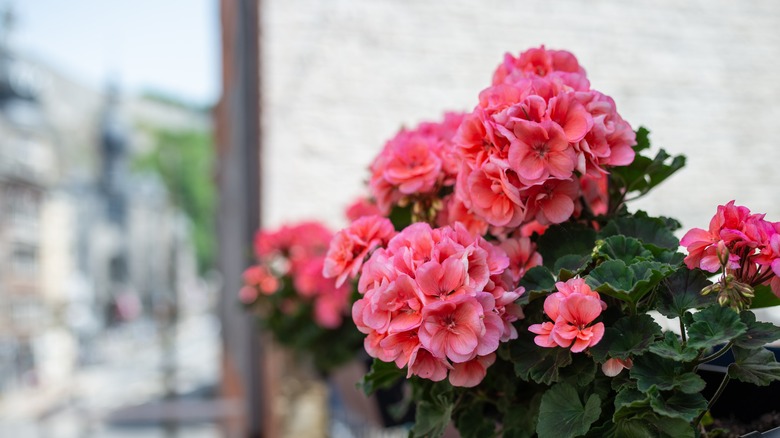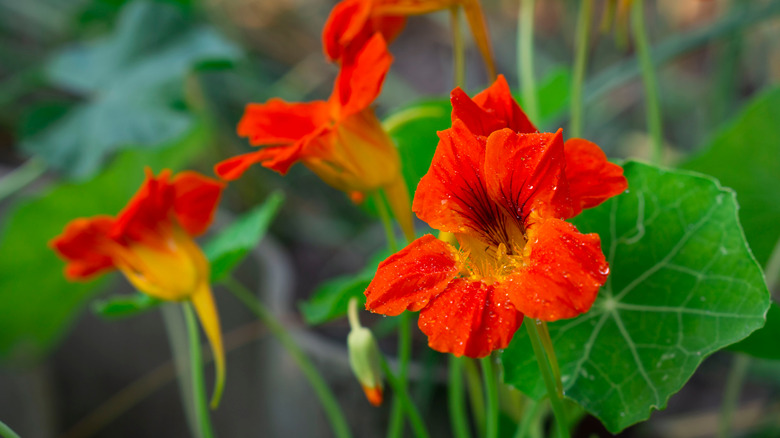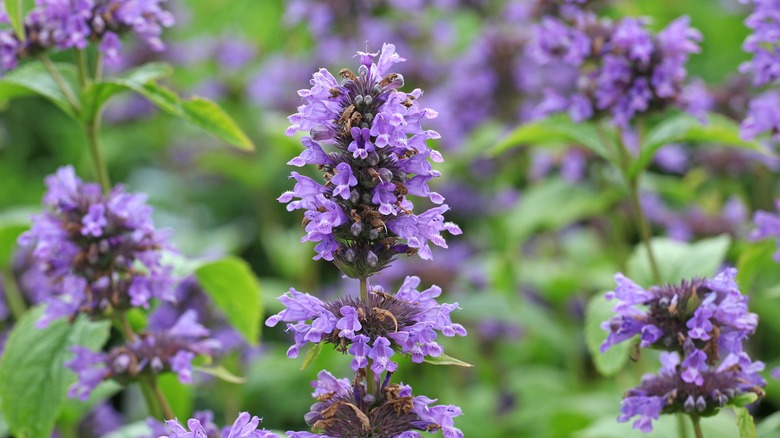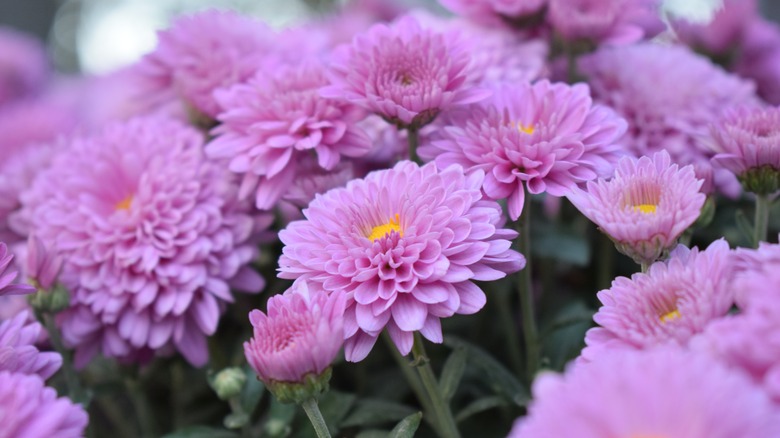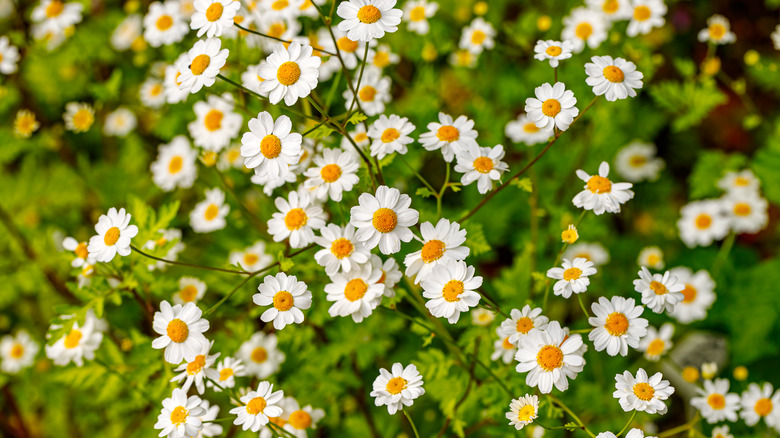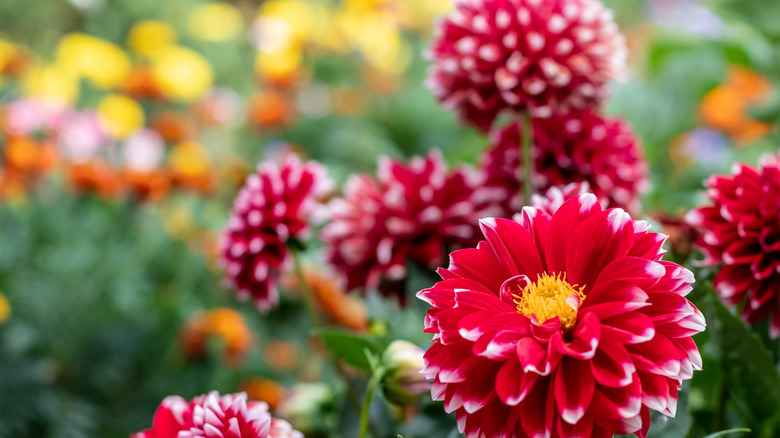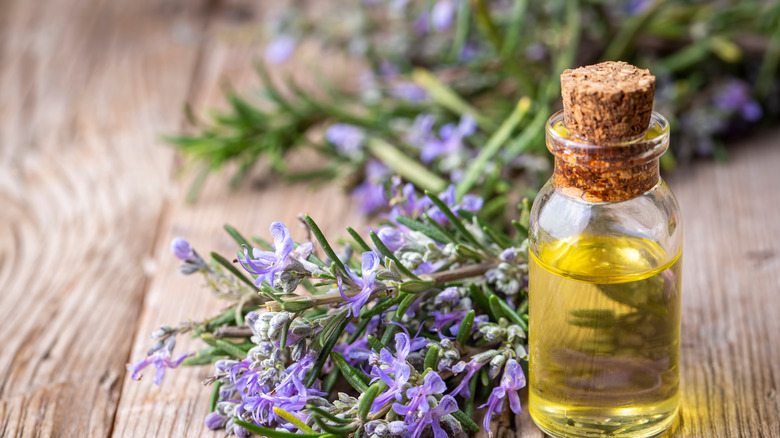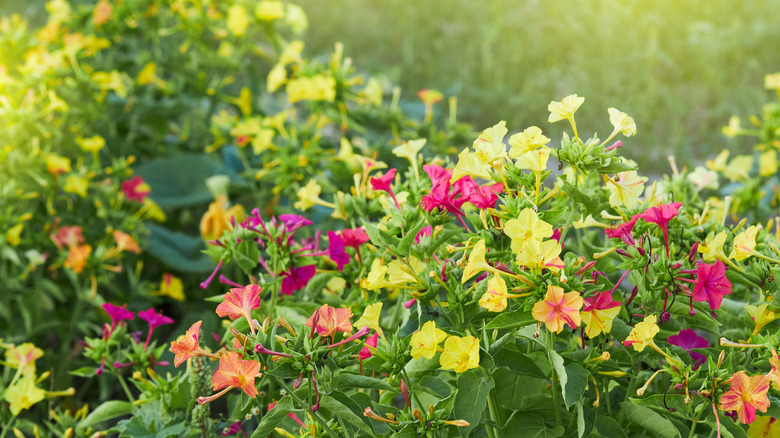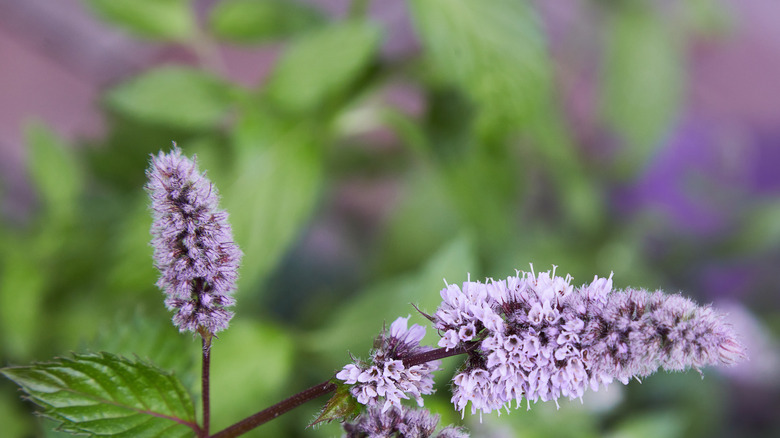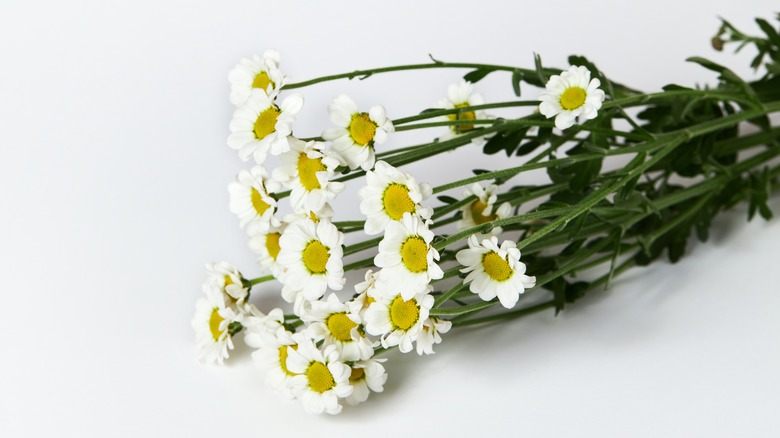15 Flowers You Can Grow To Ward Off Bugs And Other Pests
Having bugs in and around your home, garden, patio, or yard can be frustrating. Not to mention, they're especially hard to get rid of. While powerful, inexpensive insecticides can help eliminate these nuisances, they can also introduce harmful chemicals into your living space.
Looking for a natural way to get rid of bugs and other pesky critters? Then know that many flowers offer protection against them. According to the Malaria Journal, certain plants and flowers contain compounds that insects find toxic, resulting in an effective repellent that can keep them out of your garden or home. Ultimately, this will mean seeing fewer pests, such as mosquitos, fleas, cockroaches, flies, and more, all year long.
So, if you want to enjoy your time indoors or outdoors without annoying insects, there are plenty of blossoms out there that may be the solution you're looking for. Whether you're a novice or someone with a green thumb, you'll be sure to find the right bug-repelling flowering plant in this comprehensive guide.
1. Alliums
According to The Scott Arboretum of Swarthmore College, Alliums (Allium) can help you keep aphids, cabbage worms, slugs, and more out of your garden. This is a result of the strong odor of onion and sulfur they release, which is pungent to insects but not humans. The bloom season for Alliums, which can grow 6 to 12 inches tall, is late spring to early summertime, and they grow best in USDA growing zones 3 to 9. In order for Alliums to grow, they require full sunlight and well-draining soil.
2. Petunias
Petunias (Petunias) are a well-known flower type that many gardeners recognize. In addition to looking beautiful, they can also ward off insects. According to the University of California Division of Agriculture and Natural Resources, Petunias require plenty of water, sunlight, and sandy soil to keep them healthy. They can also be grown in different environments within USDA growing zones 10 and 11. The bloom season for petunias, which grow up to 18 inches tall and spread 4 feet wide, begins during spring and ends in the winter.
3. Marigolds
Marigolds (Tagetes spp.) are extremely popular during the fall in many different cultures, and research conducted by North Carolina State University also suggests they can be used to manage the growth and reproduction of nematodes. As a result, you can keep the nematode population in your garden under control. To ensure your marigolds are healthy, make sure they receive direct sunlight, have enough room to grow, and are watered when their soil is completely dry. Marigolds, which bloom from early summer to late fall, require loamy soil and thrive in USDA growing zones 2 to 11.
4. Floss flowers
Floss flowers (Ageratum houstonianum) are purple-blue blooms that can repel pesky insects. While the toxic compound found in Blueminks can be especially valuable during seasons when mosquitoes are most active, it can also cause harm if ingested. According to Garden Design, the blooms can cause liver lesions in grazing animals. Floss flowers require full sunlight and moist, well-drained soil that's rich. The bloom season of Floss flowers, which can grow up to 36 inches tall and 18 inches wide, is from mid-summer to fall. They thrive in USDA growing zones 2 to 11.
5. Lavender
Lavender (Lavendula spp.) provides a delightful fragrance that can also ward off bugs, specifically when made into an essential oil. Mosquito Reviews states that essential oil made from lavender contains linalool, a potent compound that's repulsive to mosquitos. Their bloom season begins in late spring and can end in late fall, and this flower can grow up to 24 inches tall and wide. Lavender plants thrive in USDA growing zones 5 to 9 and in well-draining soil that's slightly acidic. While they must receive full sunlight daily, they don't require frequent watering.
6. Geraniums
Geraniums (Pelargonium) are easy-to-grow flowers that can keep mosquitos, beetles, and other pests away. For this reason, Geranium extract is commonly found in natural insect repellents, such as sprays and candles (via Garden Guides). The bloom season for Geraniums begins in spring and typically ends in fall. This flower grows best in USDA growing zones 9 to 12. Caring for Geraniums is simple since they can withstand periods of infrequent watering. Simply make sure your blooms receive plenty of sunlight and are planted in rich loam soil.
7. Nasturtiums
Nasturtiums (Tropaeolum spp.) bloom from summer to fall and can assist with pest control in your garden. According to Cochise County Master Gardeners, Nasturtiums may repel aphids, Mexican bean and striped pumpkin beetles, potato and squash bugs, and whiteflies. For best results, plant them near your vegetable crops (they're edible) and ensure they receive plenty of direct sunlight. You'll want to regularly water Nasturtiums, but avoid overwatering. It's also a good idea to plant them in USDA growing zones 8 to 10 and in loamy soil. These flowers can bloom up to 5 feet tall and 2 feet wide.
8. Hyssop
Hyssops (Hyssopus officinalis) are great companion flowers to keep away cabbage moths and flea beetles (via Brigham Young University). Hyssops typically bloom during late summer and fall, thriving in USDA growing zones 4 to 9. Hyssop flowers require a lot of sunlight and well-draining soil with high-quality fertilizer. Make sure to check the moisture of the soil regularly to determine whether your flower needs water. These types of flowers can grow up to almost 2 feet tall.
9. Chrysanthemums
Chrysanthemum (Chrysanthemum spp.) flowers can be used to deter insects. If you're constantly bugged by mosquitos, fleas, flies, moths, or ants, mums may help ward them off since some naturally contain pyrethrin, a potent pesticide (via National Pesticide Information Center). Chrysanthemums will typically grow from late summer to early fall. Make sure to plant them in USDA growing zones 5 to 9 where they can receive full sunlight and regular watering. They'll also need nutrient-rich soil and may grow up to 3 feet tall.
10. Feverfew
Feverfew (Tanacetum parthenium) can be used as an effective bug repellent to remove any mosquitos, gnats, ticks, and fleas (via Candide). These flowers are often mistaken for daisies and are part of the chrysanthemum family. The bloom season for Feverfew flowers typically occurs from summer to fall. In order for them to grow, they should be planted in USDA growing zones 5 to 10 and in well-draining, loamy soil. They also require direct sunlight and moderate watering. You can expect them to grow 8 to 24 inches tall.
11. Dahlias
If you're looking for something to free your garden of nematodes, dahlias (Dahlia pinnata) may be the best flower option. Dahlias not only are beautiful, but they're also extremely helpful in getting rid of these types of pests. Dahlias can bloom during the summertime and fall in USDA growing zones 8 to 10. According to ProFlowers, this flower requires six hours or more of full sunlight daily and weekly waterings. Dahlias also thrive in well-draining soil. In the right conditions, they can grow up to 4 to 5 feet tall.
12. Rosemary
Rosemary (Salvia rosmarinus) is a type of shrub with bright-colored blooms that not only smell amazing but also have powerful pest control properties. In fact, Earth's Ally states that the strong fragrance released from this flowering plant can keep insects away. Rosemary plants, which grow up to 3 tall and 4 feet wide, can bloom any time of the year, often lasting from spring to fall. It's best to plant this aromatic herb in USDA growing zones 8 to 9 and give them well-draining soil and full sunlight daily.
13. Four o'clock plants
Four o'clock plants (Mirabilis jalapa) are a type of perennial bloom. While many sources suggest that these flowers repel insects, it's important to note they're also toxic to pets and humans if ingested. Despite this, a few flowering shrubs can be a great addition to your garden for pest control. Four o'clock plants require full sunlight and can grow up to 3 feet tall in the summer and fall, as long as certain conditions are met. For example, they thrive in well-draining soil in USDA growing zones 7 to 10.
14. Pennyroyal
Pennyroyal (Mentha pulegium) is a species of mint with small purple or lilac blooms. While pleasantly aromatic for humans, pennyroyal can be used to repel several pests, including mosquitos, ticks, and fleas, due to their strong smell (via Cape Gazette). Pennyroyals grow in the summer and fall up to 6 inches tall. For best results, plant them in USDA growing zones 5 to 9, and make sure they receive partial sunlight and enough water to keep their rich, fertile soil moist.
15. Pyrethrum
Pyrethrum (Pyrethrum) is a flower that's part of the daisy family. National Geographic considers this bloom one of the deadliest for insects and a lifeline to farmers. This is because the yellow center of the flower contains a strong ingredient known as pyrethrin, which paralyzes bugs. Pyrethrum flowers often bloom from spring to summer, growing up to 24 inches tall. Their USDA growing zone falls between 4 and 10. To cultivate this flower, you'll need high-quality, well-draining soil, and regular watering weekly. Make sure not to overwater this bloom, though.
